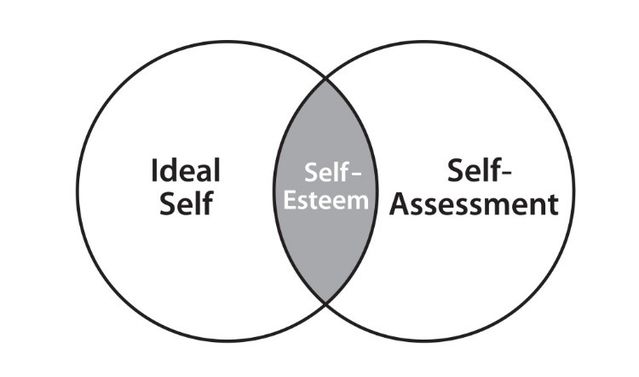
3 Essential Steps to Lasting Self-Esteem
Seeking approval from others never leads to lasting self-esteem.
Posted Feb 15, 2019 in Psychology Today

Humiliation is public exposure of our private shame.Source: Unsplash
Have you ever put someone in charge of your life by trying to live your life to please them? Whose life are you living? You don’t need someone’s permission to live your own life; you must seize it.
Throughout my long career in psychiatry, I have had many patients say to me, “I just want you to make me happy,” as if I were going to dispense some magic potion that would suddenly make them feel good about themselves. They look a bit shocked when I respond, “How much work are you willing to put into it?” I often add, “I’ll work hard to help you feel better, but I’m not going to work harder than you do.”
Many have tried their own elixirs: sex, drugs, alcohol, gambling, food, and internet porn. A life filled with pursuing the rush of the next dopamine high of these addictions relieves the pain but only in transient and superficial ways. And like all addictions, to reach that high the person must seek more and more stimulation, but they never reach that pinnacle of pleasure again. I have come to believe that seeking approval operates in the brain in the same way.
When I was a boy, I struggled with the question, “How will I ever learn to be a man?” I heard, “Boys don’t cry,” but I cried. Boys are supposed to want to win, but I didn’t care. Boys are supposed to like to fight, but I avoided conflict. Boys get mixed messages: make yourself vulnerable, show your feelings, but if you do, the world can’t stomach it, and you’ll often get the emotional crap beat out of you. Telling me to put on my big boy pants never really worked.
I grew up in a small town in Nebraska where everyone looked alike, thought alike, and believed alike. I tried to look, think, and believe as they did, but during those painful years I felt estranged from my soul. I felt powerless while those around me seemed to have unlimited power.
I tried dealing with it by being the best little boy I could be. I followed all the rules. I went through life as everyone’s designated driver. When people told my mother, as they often did, “What a fine young man Loren is,” I felt good for a moment, but I always felt a bit disgusted as well. Why couldn’t I be the bad boy, the one whose flaunting of the rules was dismissed with “Boys will be boys”? But I couldn’t risk disapproval.

This world belongs to me, tooSource: Unsplasharticle continues after advertisement
When I came out, I wasn’t just saying, “Hey, I’m gay,” I was screaming, “I am what I am! This is me being me! It’s my world too!” Ironically, when I stopped faking that I was meeting the social definition of a man, I finally began to feel like a real man. Gandhi was right; they couldn’t hurt me unless I allowed them to.
The organizing principle and nucleus of self-esteem is our ideal self, in other words, the perfect me. The ideal self is the person I want to be, a person who is competent, attractive, well-liked, and morally good. It is the sum of all the traits, values, and issues I’ve inherited, first from my family, then from my religion, and finally from society and culture. It is the look alike, think alike, and believe alike that I assumed was the norm when I was young. I knew who I should be because in one way or another they had told me and being a “fine young man” meant I was meeting their standard. The ideal self was easy to figure out. It became more complex as my world enlarged; sometimes what people wanted me to be conflicted with others’ expectations, and it made me confused and anxious.

Self-esteem exists where the ideal-self and the actual-self overlapSource: Loren A Olson MDarticle continues after advertisement
Then I began to realize that I needed to deconstruct that old idea of the perfect me and reconstruct a new ideal of my own, all the while knowing that I was risking disapproval from people I loved and respected. The perfect me had to be a bit of a stretch but still attainable because reaching a goal that is too easy would be meaningless. But the critical issue was that it had to be of my own choosing. What I discovered was that when I chose this new ideal for myself, people really didn’t care as much as I had thought they would.
The other task was to begin to assess myself more realistically. Often the person we think we are is based less on the facts of who we are than a negative bias in our brains. We must eliminate those distortions in our thinking. I needed to stop beating up on myself for not being the man I thought I had wanted and expected to be. I wasn’t perfect, but was I good enough? Once I began to have a good sense of my own ideal and an accurate assessment of myself, the circles in the diagram above began to align, and the area defined as self-esteem grew. I couldn’t align those circles in the diagram as long as that perfect me was defined by someone else. Earlier in my life, when I couldn’t be the person I thought I should be, and I was being very critical of myself for not being able to, the circles in the diagram were swirling around in a pool of shame and guilt.
Brené Brown, in her book Braving the Wilderness: The Quest for True Belonging and the Courage to Stand Alone, writes that when your path is clearly laid out before you, it really isn’t your path. For much of my life I was following someone else’s plan, and I had relinquished my power to others. I wanted to fit in, to be accepted into a group in which I didn’t really belong. Fitting in and belonging to a group are not equivalent. As Groucho Marx said, “I don’t care to belong to any club that will have me as a member.”article continues after advertisement

I am the person I always wanted to be.Source: Unsplash
Self-esteem is nothing more than how closely the person we are corresponds to the person we want to be. The model for self-esteem pictured above has nothing in it about approval from others. Approval from others is an addiction. You get a hit and it feels good, but it doesn’t last, so you have to keep returning for another. And another. And another. And each approving comment must be higher praise than the previous one.
Here are the three essential steps to developing a satisfactory self-esteem:
1. Take charge of that ideal self, the perfect me, the person you want to be. Choose your own path. Listen to your soul and show up as yourself.
2. Learn to see yourself as you are and avoid exaggerated self-criticism. Ask yourself, “What are the facts?” Accept that you are good enough. Stop trying to fit in to a group you don’t really want to join.
3. Stop looking for approval from others, but look inside yourself for approval, strength, and confidence. Are you willing to do the work to make yourself happy by setting well-chosen goals for yourself and realistically assessing your progress toward reaching them?
As I began to allow myself to be seen, deeply seen, by others, I found more acceptance from others than I had when I was trying to be someone I really wasn’t. When we choose to be a person that is different from what we believe is expected, others approve of us as much or more than if we had chosen to meet the expectations of others. And it feels very good to take back the ownership of our own lives.
About the Author

Loren A. Olson, M.D., D.L.F.A.P.A., is a Distinguished Life Fellow of the American Psychiatric Association.In Print:Finally Out: Letting Go of Living StraightOnline: Loren A Olson MD Author

